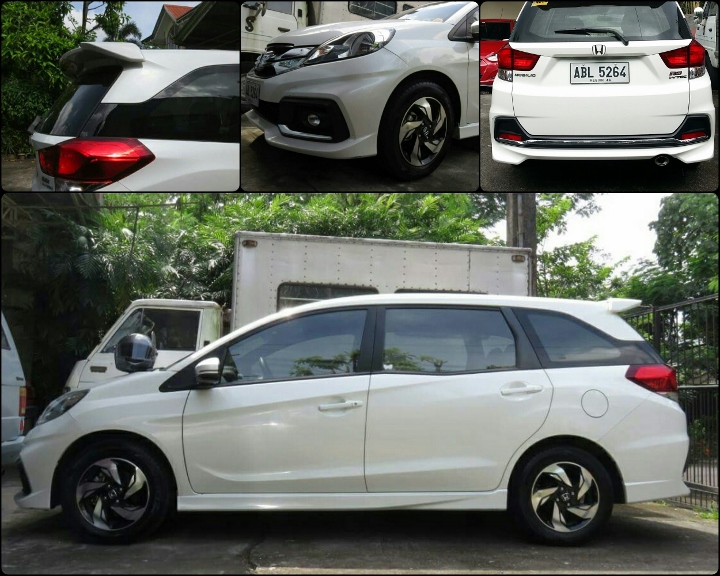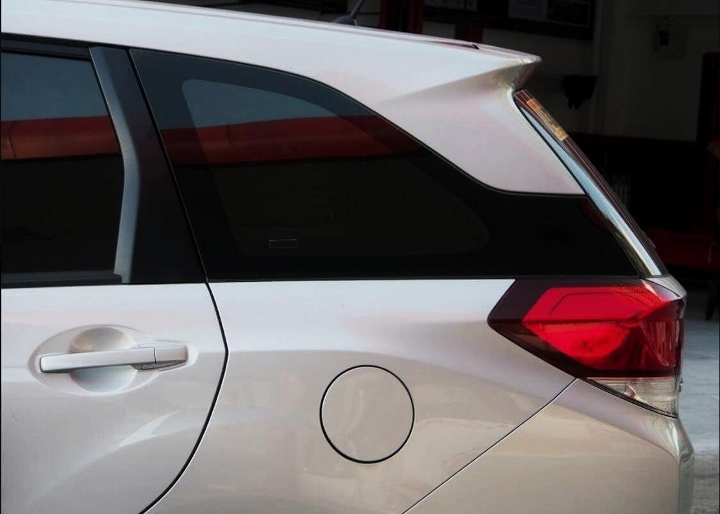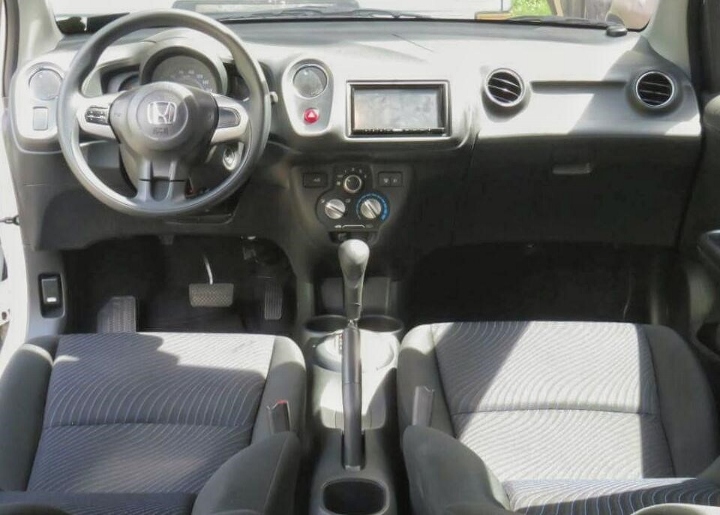Imagine having a long time crush. For years, you and the object of your admiration have been in contact on and off. You know there’s something there, but it was never the right time for the both of you. Because of that, there’s not much beyond the smiling in the hallways or the occasional hi and hello. Then suddenly, after some years, in the style of When Harry Met Sally, you find yourselves crossing paths again. This time, someone said, “Hey, you know, I’ve always wanted to ask you out”. After going on a few dates, you realize that during all the time you’ve looked from afar at this person, you’ve built up an image of them that they themselves cannot live up to. Even after the years of anticipation, this one is just not all they were cracked up to be.

Having time in the Honda Mobilio RS Navi CVT is a similar experience.
For a long time, the desire to be behind the wheel of an RS straight out of the factory was left unfulfilled. During that period, articles were read, videos watched, and pictures downloaded, hoping for the opportunity to one day get behind the wheel of a road going version of a race car. However, when the time came to get behind the wheel of an RS and taste the racing heritage imbued in that automobile, the realization that the sporty image is nothing more than a ruse to get your butt on the seat instantly dawned.
Looks: 7/10
Table of Contents

On the outside, the Mobilio RS is full of promise. Of all the 7-seater options, there is no doubt that the exterior aesthetics of the Mobilio 1.5 RS Navi CVT is most appealing. The RS version has a go-fast rear wing, side skirts, an aggressive front bumper, grille, rear bumper, and 15-inch wheels. If these hints were not clear enough, a red RS badge is clearly visible to people following the car. Rightly so, because one would expect that the Mobilio RS could leave most humdrum cars in its dust if the driver so pleases. Even without the RS body kit, the style language used is edgy and futuristic. The style, especially the rear quarter of the car wouldn’t be out of place in a Japanese cartoon with giant robots. The exterior styling certainly contributes to the RS appeal.

The disappointment starts with the interior. Once in the driver’s seat, there is an overwhelming feeling of economy, and that’s putting it mildly. Thinking that we are talking about a segment that could probably be the least expensive vehicle per person aside from commuter vans, that might not sound too bad. But when we consider that Honda has been placing itself as a premium brand, there was a clear disconnect between expectations were and what was delivered.

Here are some reasons why this is so. Once seated, the driver is greeted by a sea of plastic. It’s the hard kind that would make owners worry the dash would turn brittle over time. Everything touched by the driver is made of the same material, steering wheel, gear selector, and handbrake lever are all covered by this. The seat, which looks sporty and may resemble bucket seats are actually flat and thin enough that it won’t take a princess to find discomfort when a rear passenger’s knee even touches the driver’s backrest. The instrument cluster lacks information that would useful for a performance oriented car.
Aside from an awkward vertically oriented tachometer, all that is provided are idiot lights which would tell you that there isn’t any oil pressure or that coolant temperature is already nearing the limit. The styling and execution of the glove box are reminiscent of a depressed robotic frog that would break if an overly eager passenger tries to open it. The buttons and switches feel like afterthoughts since it lacks any design. At the rear, the rumble seats fold up but do not lock in place. To hold it up, the Mobilio employs the age-old technology of hook and strap. Because of this, one-handed operation of the third row is a definite impossibility. If the H branding was removed, there is nothing that would be reminiscent of the quality Honda has become known for.

One might be forgiven to think that, it’s a 7-seater, surely the Spartan nature of this vehicle is offset by its capacity to fit a crew of 7. Alas no. the 2nd row can only fit 2 and a half adults. Even the brochure shows a diagram of 2 adults and a child in the middle row. To be fair, the 3rd row can fit 2 adults. However, only for 20 minutes before one of them complains. At the very least they can treat themselves to drinks via the cup holders provided for the 3rd row.
Driving Experience: 8.5/10
At this point, it has become apparent that maybe the Mobilio was not made for attacking corners, straight line speed, or braking. Only when it is accepted that the Mobilio is a longer econobox like the Honda Brio it’s based on do we actually see that the Mobilio offers quite a lot by way of driving experience.

One thing that Honda definitely got right in the Mobilio is the drive train. The 1.5L powerplant is capable of 120hp, the most horses in this segment. Couple this with the same CVT (Continuously Variable Transmission) found in the Honda City and an open mind void of expectations, and we get a joyous engine and gearbox combination for long haul drives on highways. In addition, the smooth power delivery by the CVT is finely controlled by a right foot thanks to an intuitive gas pedal. The Mobilio also features an Eco light which turns on whenever it feels that the driver is driving in a prudent economical manner. All of these features make the Mobilio a great road trip car which was experienced first hand when we drove it from Makati to Pangasinan and back. When we adjust expectations for a moment, everything starts falling into place.
Driving the Mobilio, though was not all fine and dandy. There were things that were bothering during the drive. First is something that’s a property of the CVT itself. CVTs lack a physical gear which multiplies the engine’s power. Because of this, there is a clear detachment from the pedal to how fast the wheels turn. The pedal clearly revs the engine, however, there is some time before all that power is translated into forward motion. Something that may be disappointing even as road trip mobile, are the lack of comfort to be gotten from the seats. The driver’s seat offered little to no support and the bottom of the seat felt flat. Both attributes fell short of the expectations set by how sporty the seat looked.
Technology: 6/10
Given that the Mobilio is apparently an elongated econobox with a good engine and transmission, it was quite understandable that there was not much technology found in it. Sure the RS Navi variant had a touchscreen. However, it is not to be expected that it is to be likened to how sensitive current mobile phones are to the touch. The Navi was also not the best system out there. Enough opportunities were given to using it, but Waze was found to be more useful and up to date.
It wasn’t all bad. The speakers, they were good.
Cost: 6/10
There is something positive with running the Mobilio. On a short fuel economy test using the full tank to full tank method, we found that the Mobilio had very good fuel economy. The vehicle was driven from Quezon City to Taguig and back via C5 and the trip computer indicated 8.7 Km/L. However, when fuel was topped up, it was found that it fared much better. It actually achieved 11.55 Km/L. Again, the Honda powertrain proving its worth but this is another sign that the Mobilio is geared towards economy and not performance. We even got from Makati to Urdaneta, Pangasinan in one full tank.
So, how much has to be forked out to enjoy this powertrain? The various variants are listed below as well as the premium for the White Orchid Pearl color.
- Mobilio 1.5 E MT – Php822,000USD 13,958INR 1,188,037EUR 13,440CNY 101,928
- Mobilio 1.5 V CVT – Php892,000USD 15,146INR 1,289,208EUR 14,584CNY 110,608
- Mobilio 1.5 RS Navi CVT – Php982,000USD 16,674INR 1,419,285EUR 16,056CNY 121,768
For color: White Orchid Pearl – SRP + Php20,000.00USD 340INR 28,906EUR 327CNY 2,480
With the Mobilio costing as much as it does, it’s hard to imagine that we get so little. Putting this into perspective the top of the line Suzuki Ertiga can be had for Php918,000USD 15,588INR 1,326,785EUR 15,009CNY 113,832 while our recommended Ertiga variant, the GL Automatic, comes in at Php799,000USD 13,567INR 1,154,795EUR 13,064CNY 99,076. Having tried the Mobilio there just isn’t anything aside from the drive train that justifies the almost Php100,000USD 1,698INR 144,530EUR 1,635CNY 12,400 difference. Since the overall experience feeling as economically inclined as it is, with the lack of creature comforts and technology, it’s hard to imagine that the Mobilio is the premium choice.
Recommendations and Conclusion
With the difference between the V variant and the RS Navi CVT being sporty body parts and a touch screen head unit GPS, the recommended variant would have to be the V. If navigation is a must, it will be advisable to use the difference in price to get an aftermarket head unit. However, if it’s an option, consider the Suzuki Ertiga.

When putting two and two together, the realization is that the Mobilio, even the RS the version, is not the performance people carrier it was expected to be. What it’s good at is hauling a family with kids through straight highways. Doing further research on the model, it was found that RS for the Mobilio stands for Road Sailing. To be fair, driving the car long haul was smooth sailing thanks to the powertrain. Therefore it goes to show that once the expectations brought about by the RS is dropped, we are left with a decent road cruiser. Having to go through all that disappointment before we realize what the Mobilio has to offer makes it a 2 out of 5 Jack car. Now that we know what the Mobilio really is, was the misleading badge forgivable? Yes. I think, as long as it says it’s sorry, it returns the money it got by fooling people who bought it, and Honda gives us the real RS model we deserve, then maybe, we can think about moving on.


a nicer camera for the review could have been better. 🙂 Current quality shots made it look like the car is a second-hand unit on interiors.
this is no way the most appealing of all the 7-seater MPV in the market. for you maybe. but not for most.
These are the exact reasons why I chose the Ertiga GL over the Mobilio. H badge is really overpricing their cars. Kung baga #DONTME.